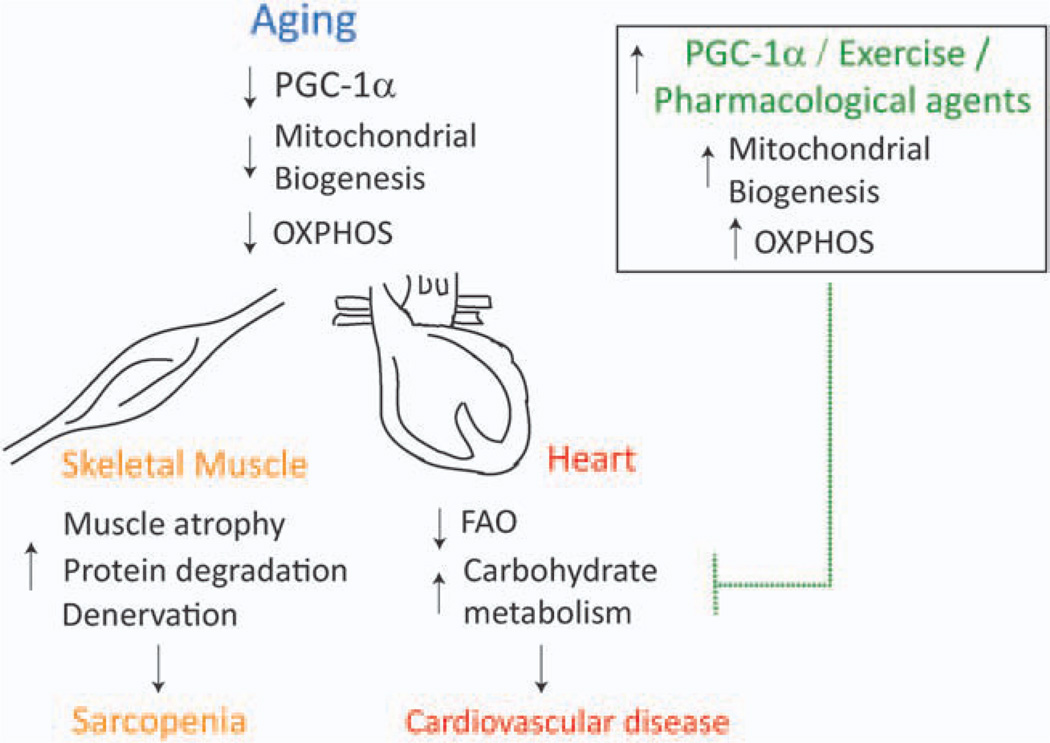Figure 2.
Decreased PGC-1α expression and mitochondrial dysfunction contribute to skeletal muscle and heart aging. During aging, there is a decrease in PGC-1α expression in the heart and skeletal muscle, which contributes to decrease in mitochondrial protein expression, mtDNA levels, and OXPHOS. This mitochondrial dysfunction is associated with sarcopenia and may contribute to atrophy, protein degradation, and denervation in the skeletal muscle. The adult heart depends primarily on mitochondrial FAO for ATP production. Therefore, decreased PGC-1α expression and mitochondrial dysfunction are believed to contribute to decrease in FAO and increased reliance on carbohydrate metabolism for ATP. This shift in energy metabolism is associated with cardiomyopathy and other cardiovascular diseases. Recent studies have shown that increased PGC-1α expression, whether by exercise/pharmacological agents, leads to increased mitochondrial biogenesis and OXPHOS and may be able to impede the development of sarcopenia and cardiovascular diseases in the aging skeletal muscle and heart, respectively. [Color figure can be viewed in the online issue, which is available at wileyonlinelibrary.com.]

